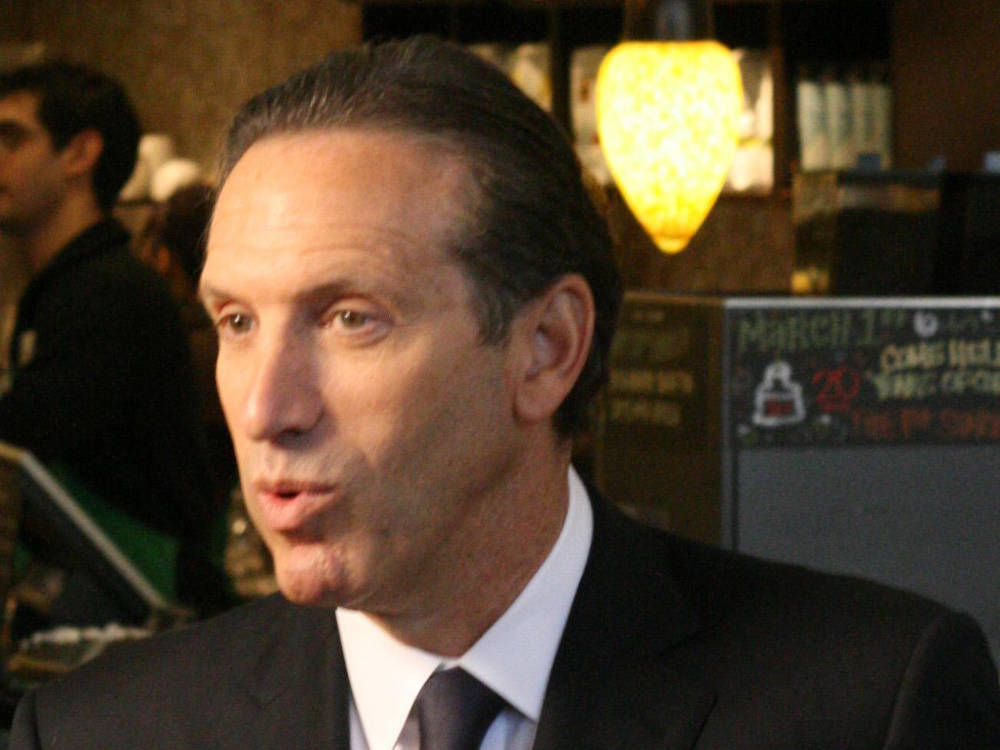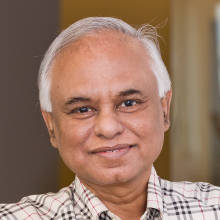[Photograph of Howard Schultz by Sillygwailo under Creative Commons]
Most companies look at costs as fixed and variable costs. And if reliable partners can be found to undertake the activities related with variable costs, all of it is quickly outsourced to them. This strategy leads to the following benefits:
-
Improved margins
-
Improved liquidity
-
De-risking the business
Even Fortune 500 companies enthusiastically embrace this strategy to seek these benefits.
Now outsourcing will certainly lead to these benefits, but if recklessly pursued, it can cause long-term, irreversible damage to the company's ability to remain competitive.
Though Wall Street welcomes this move. It has even coined a seductive term for it: asset light. And when a company pursues this strategy and improves its liquidity, Wall Street bullies it into returning the rewards to shareholders through share buybacks and special dividends.
Has any Fortune 500 company pursued this strategy and paid a price? Dell's story illustrates the downside of pursuing this strategy without adequate due diligence.
Watch a video of this episode or continue reading
Episode 17: New rules of business
Dell entered the asset-light game and took the first step by outsourcing the production of its motherboards to Asus, a Taiwan-based manufacturer.
Asus started by providing simple, reliable circuit boards at a lower price than what Dell could do itself. Dell's profit swung upward, tempting it to steadily outsourcing more and more sophisticated work to Asus.
Asus, to its credit, kept developing capabilities to match Dell’s ever-expanding requirements. To squeeze the maximum benefit from outsourcing, whenever Dell outsourced a process, it ceased doing that activity internally.
Dell's profits soared and the company prospered. But the prosperity came at a cost. Dell had reached a point where it had outsourced most of its competencies to Asus, which had over time acquired expertise to produce devices better than Dell.
In 2005, Asus capitalized on this expertise by introducing products that competed with Dell in the marketplace. By then Dell had lost its competitive advantage. It was time for Dell to face the rough weather. So much so that it had to resort to moving away from public glare to buy time to restructure its business. It was forced to take the unprecedented step of delisting itself from the stock market.
Is there another, better lens through which a company can view cost so that it can be reduced but the firm still remains robustly competitive?
Indeed there is.
Identify costs that are related with activities that provide your company with competitive advantage. Label them as 'core' cost.
Label all other costs that do not fall under this classification as ‘non-core’ costs. Your strategic intent should be to make every non-core cost variable. In short outsource your non-core cost to a worthy partner. Today there are ample specialized outsourcing firms that can offer you world-class expertise in any and all areas. They can do these activities better and that too at a lower cost.
Why should you focus of the core activities? It is the "core" that gives your business and your brand sustainable and enduring competitive advantage. Therefore, you should focus relentlessly on them so that you can stay ahead of competitors on your core offerings.
Is there a strategy where the cost of core activities can also be reduced without adversely impacting customer experience?
As is the case with all problems, even for this issue there are some pathways that could lead us to nirvana!
In core activities, identify costs related to customer facing activities. Label them as customer facing costs. Label all other costs as non-customer facing costs and look for ways to reduce these - but with caution. For that the following strategic initiatives would bear dividend:
- Offshore these activities to locations that offer arbitrage. Be it people, location or any other arbitrage.
- Automate all left-brained and repetitive activities. Moore's law, which states that the cost of technology is falling while computing power is increasing, is still playing out. This will bring down cost while concomitantly increasing efficiency of the process.
- Enter into strategic alliances or partnerships to gain access to mission-critical resources. This can lead to cost reduction if various common activities can be clubbed to gain economies of scale. These could range from bulk purchase to R&D expenses and everything in between.
- Sell and lease back your assets. This will free up your cash, but will ensure that the activities related to them are 100% under your control.
Now shift your focus to core customer facing costs. A word of caution! Do not act in a cavalier fashion in dealing with these costs.
For example, take product quality. You might be tempted to 'reverse engineer' the cost - ensuring the quality remains the same, but the cost comes down. But if your customers perceive a fall in quality, they may extrapolate that to other aspects of the brand that have been left untouched. In behavioural science this is called contagious effect - one cause spreads to engulf the entire product.
Has any company pursued this strategy and benefited?
Starbucks under the stewardship of Howard Schultz has.
As is well recorded, Schultz returned in 2008 to take back the reigns of the company, which had seen a precipitous slide in revenue and customer experience in the previous years. He initiated several changes which led to more efficient and effective operations. Among them were cost cuts.
As Schultz said in a Harvard Business Review interview in the July-August 2010 edition: "Now, we did cut $581 million of costs out of the company. The cuts targeted all areas of the business, from supply chain efficiencies to waste reduction and rightsizing our support structure. But 99% were not consumer facing, and in fact, our customer satisfaction scores began to rise at this time and have continued to reach unprecedented levels. We reinvested in our people, we reinvested in innovation, and we reinvested in the values of the company."
Now let me invite Schultz again to share with you how he resisted the temptation of cutting customer facing cost - the quality of coffee. "Someone said, ‘You are roasting 400 million pounds of coffee a year. If you reduce the quality 5%, no one would know. That’s a few hundred million dollars!' We never do that," confesses Schultz.
And neither will you!
Bottom line: You can gain competitive advantage by cutting cost, but exercise caution when it comes to axing customer facing cost which gives your business competitive advantage.
If you have any questions mail us at askrajesh@foundingfuel.com


